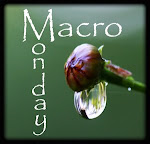Bet You Didn't Know!
Here are 101 fun facts that you might not know about Italy,
its people, and its history:
Italy is slightly larger than Arizona.
Almost 20% of Italy's population is over 65 years old.
Italy borders Austria, France, Vatican City, San Marino, Slovenia, and Switzerland.
Its longest border is with Switzerland.
The average Italian family has 1.27 children.
Everybody 18 and over can vote, however you have to be at least 25 to vote in Senate elections.
The Italian flag is inspired by the French flag introduced during Napoleon's 1797 invasion of the peninsula.
The average Italian makes $26,700 a year, however those in the more prosperous north make almost $40,000
The thermometer is an Italian invention.
Italy's unemployment rate is around 8.6%, but it is as high as 20% in the more impoverished south.
Italian farms produce grapes, potatoes, sugar beets, soybeans, grain, olives, beef, and dairy.
The average life expectancy at birth for an Italian is 79.54 years.
The famous children's story, Pinocchio , was written by an Italian.
The city of Naples gave birth to the pizza .
The piano hails from Italy.
The longest river in Italy is the Po.
The average Italian consumes half a pound of bread a day.
Italy's contributions to science include the barometer, electric battery, nitroglycerin, and wireless telegraphy.
Famous Italian explorers include Christopher Columbus, Marco Polo, John Cabot, and Amerigo Vespucci.
Today's modern Italian language originated in the region of Tuscany.
Enrico Fermi, inventor of the nuclear reactor, was an Italian.
The automobile, Fiat , is one of Italy's greatest products.
With almost 40 million visitors, Italy is the fourth most visited country in the world.
Italy is home to two microstates, San Marino and Vatican City .
Besides Julius Caesar, Shakespeare also set in Italy ( entirely or partially):
Romeo and Juliet, Othello, The Merchant of Venice, Antony and Cleopatra, Coriolanus, Cymbeline,Much Ado About Nothing, Othello,The Taming of the Shrew, Titus Andronicus, The Two Gentlemen of Verona,The Winter's Tale
Cologne came out of Italy.
The ice cream cone is an Italian invention.
The majority of Italian-American immigrants came from Naples and southern Italy.
The ancient city of Pompeii was destroyed by the volcano Mt. Vesuvius.
Mt. Vesuvius last erupted in 1944, destroying a number of neighboring villages.
Eyeglasses are an Italian invention.
The average Italian is 41 years old.
Italy has 16 regions and 4 autonomous regions.
Before adopting the euro, Italy's currency was known as the lira.
The average Italian consumes 26 gallons of wine a year.
Italy's major industries include tourism, machinery, iron and steel, chemicals, food processing, textiles, motor vehicles, clothing, footwear, and ceramics.
Italy has more hotel rooms than any other nation in Europe.
The espresso machine hails from Italy.
Italy is the world's fifth largest industrial economy.
Barely a third of Italy's land is arable and suitable for farming.
Italy's biggest trading partners are Germany, France, the United States, and Great Britain.
Over 40% of Italy's labor force is unionized.
The telephone was created by an Italian (Meucci) *Note.
Most of Italy's industry is centered around the northern cities of Milan, Turin and Genoa .
Since the end of WWII, Italy has seen almost 60 governments come and go.
The area around Venice is the wealthiest region in Europe.
Over 75% of Italy is mountainous or hilly.
The typewriter is an Italian invention.
Italians used to be known for having large families, however Italy is now known for having Europe's lowest birthrate.
Italy owes much of its prosperity to thousands of small private family enterprises.
Italian families save more money than the Japanese and Germans, and three times more than Americans do.
The average Italian consumes 25 kilograms of pasta a year.
With over 5 million people, Rome is Italy's largest City.
Italy has a population of over 58 million.
Italians refer to their country as Italia.
Italy imports over 75% of its energy.
The service sector accounts for almost 70% of the Italian economy.
Agriculture used to make up over a third of Italy's economy. It now makes up less than three percent.
The official language is Italian, but German and French are also spoken in some regions.
Italy's north has warm summers and cool winters. Italy's south has hot summers and mild winters.
The Seven Hills of Rome are Aventine, Caelian, Capitoline, Esquiline, Palatine, Quirinal, and Viminal.
The symbol SPQR can be found on many ancient buildings in Rome. It stands for "the senate and people of Rome."
Rome was founded in 753 BC.
Italy did not become a united country until 1861
The national protest song of Italy is Bella Ciao. It was made famous by Italian partisans in WWII, and can be heard at almost any protest.
Before Rome became a republic and an empire, it had seven kings.
The first king of Rome was its legendary founder, Romulus.
"Ars longa, vita brevis" is a common saying in Italy. It means "art is long, life is short" and reflects the Italian love of leisure.
An engineering marvel of the ancient world, Cloacus Maxima, is the sewer of Rome.
The first Roman Emperor was Augustus Octavian, who came to power in 27 BC.
The Roman Empire fell in 476 AD, after its last emperor, Romulus Augustulus, was forced to abdicate by barbarian invaders.
A Roman Centurion commanded 100 hundred men.
A Roman Legion was made up of 6,000 men.
Italy has a resident foreign population of 1.27 million.
Italy's current constitution took effect January 1, 1948
The president of Italy is a ceremonial figure.
The prime minister serves as the head of government and is the one who runs the country.
Since October 1946, the national anthem of Italy has been Inno de Memeli .
The Italian flag is green, white, and red.
The colors of the Italian flag represent three virtues: hope (green), faith (white), and charity (red).
The Italian Republic does not have an official motto, but it does have a common phrase: "L'Italia è una Repubblica democratica, fondata sul lavoro" (Italy is a democratic Republic, founded on labor).
St. Francis of Assissi and Saint Caterina of Siena are the patron saints of Italy.
98% of Italians are Roman Catholic.
The Roman Catholic Church is based in Italy.
Italy has over 3,000 museums.
The national sport of Italy is soccer (known as football outside of America).
Italy's national dish is pasta.
The Italian language evolved from the Latin of the Roman Empire.
The Italian peninsula is surrounded by five seas (the Adriatic, Ionian, Tyrrhenean, Ligurian, and Mediterranean).
Italy has two large islands, Sicily and Sardinia , as well as a number of smaller islands.
The Italian island of Sicily is famous for being home of the illicit Mafia criminal organization.
Napoleon spent his first exile on the Italian island of Elba.
The Alps mountain range form part of Italy's northern border, and for a long time, protected the peninsula from invasion.
Italy has three active volcanoes: Vesuvius, Etna, and Stromboli.
Naples is the largest city in southern Italy.
Next to Rome, Milan is the second-largest city in Italy.
Milan is home to Italian fashion and finance.
Rome's nickname is "The Eternal City."
Florence is home to Italian art.
A vespa is an Italian-made motor scooter that many people ride around busy city streets on.
Taken from:(Life in Italy) http://www.lifeinitaly.com/




























